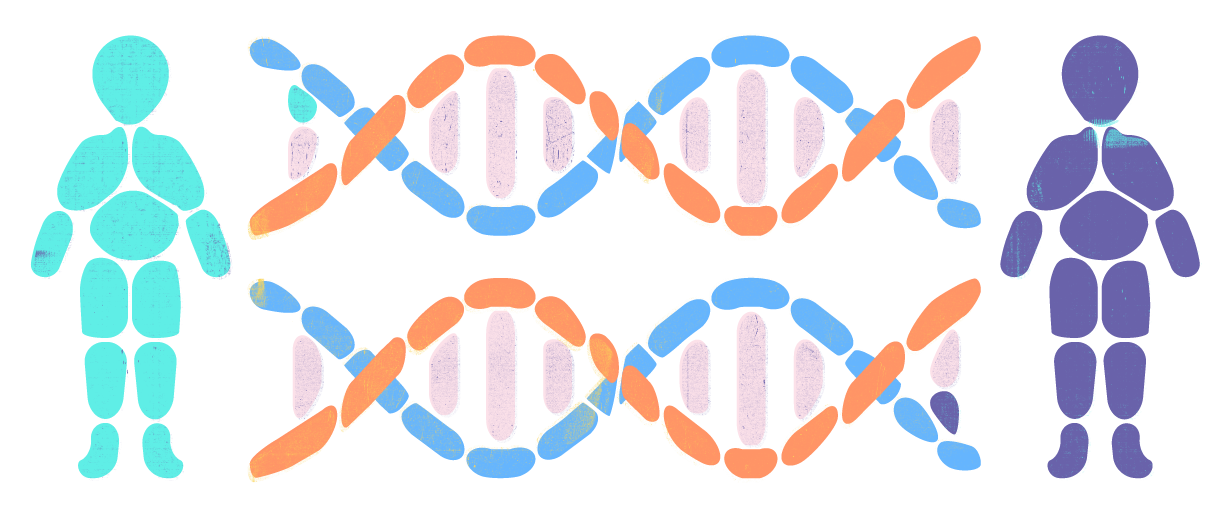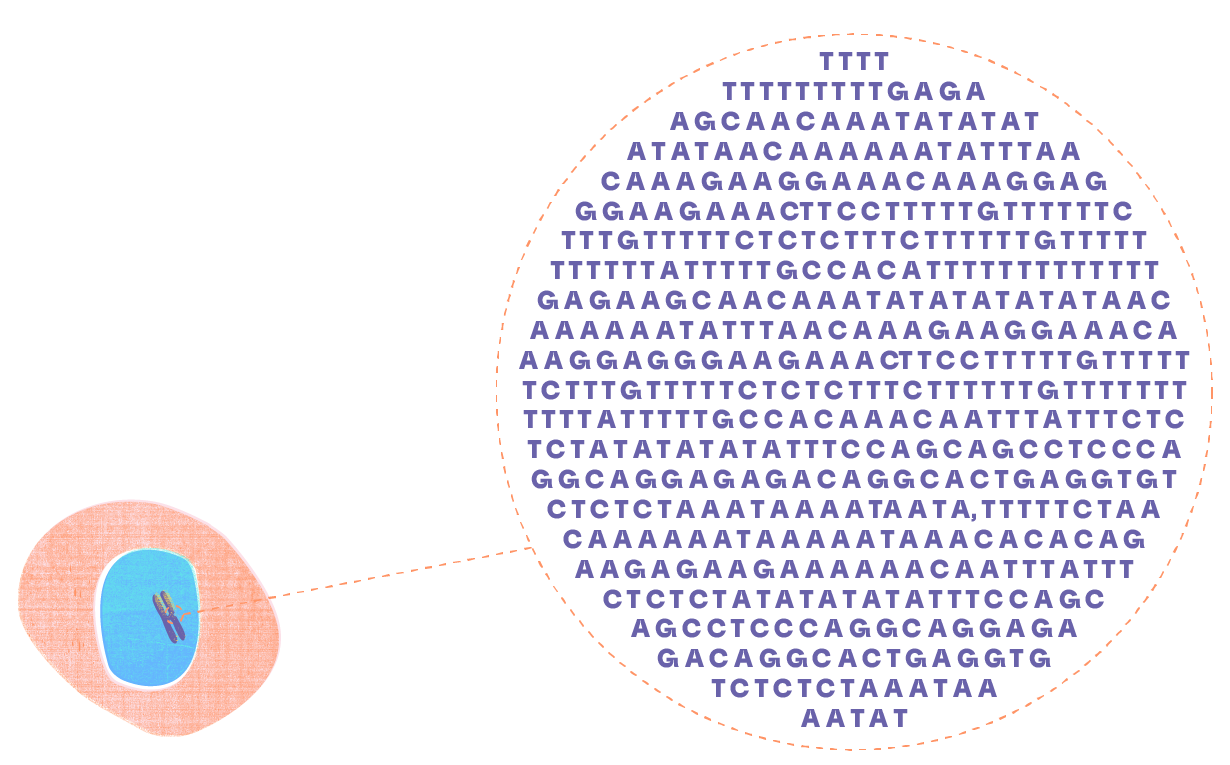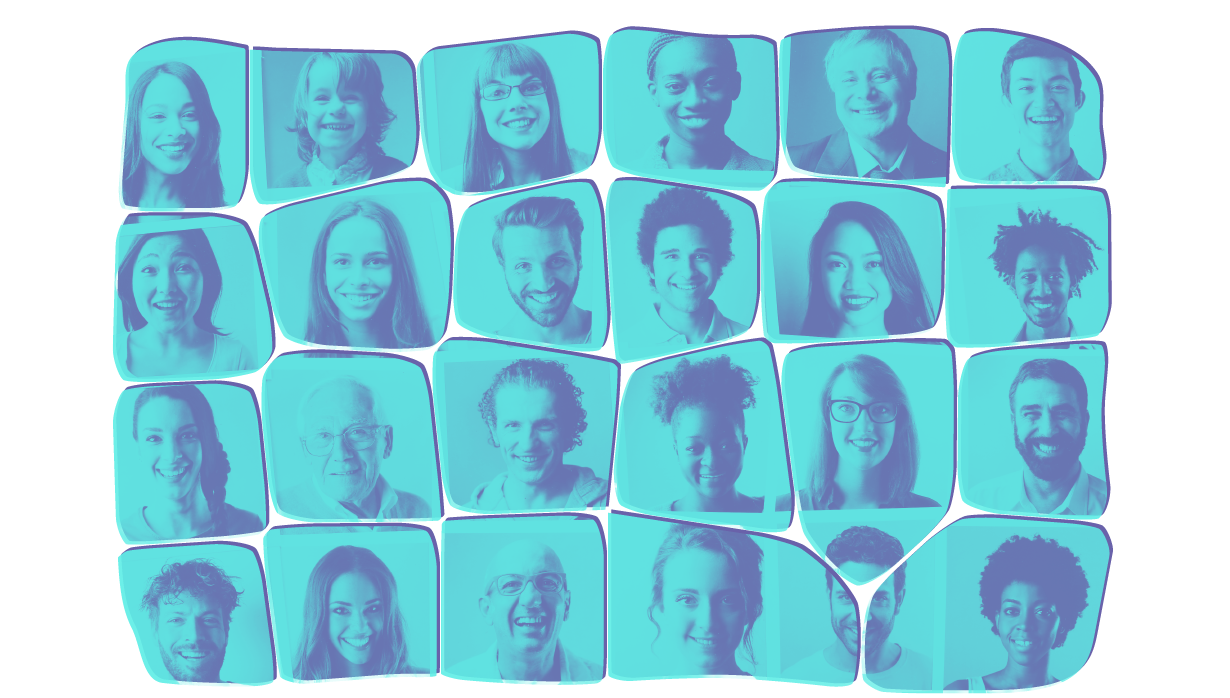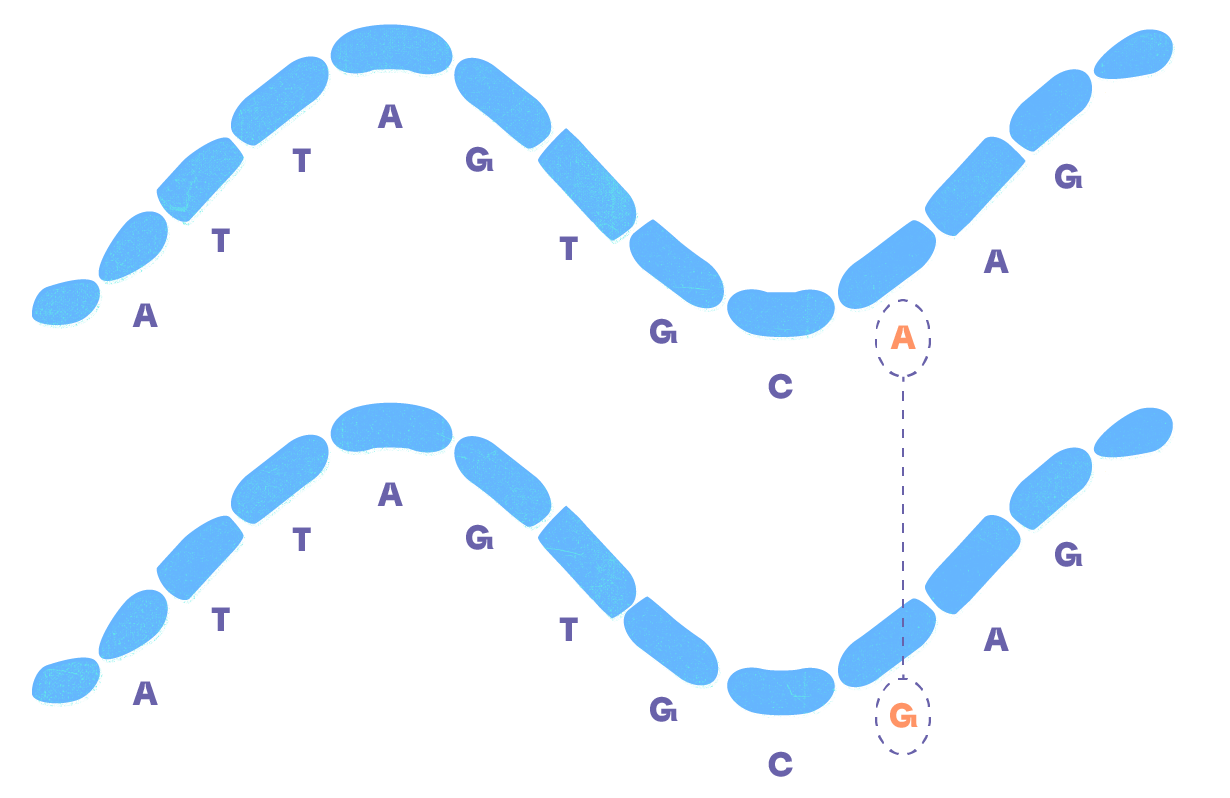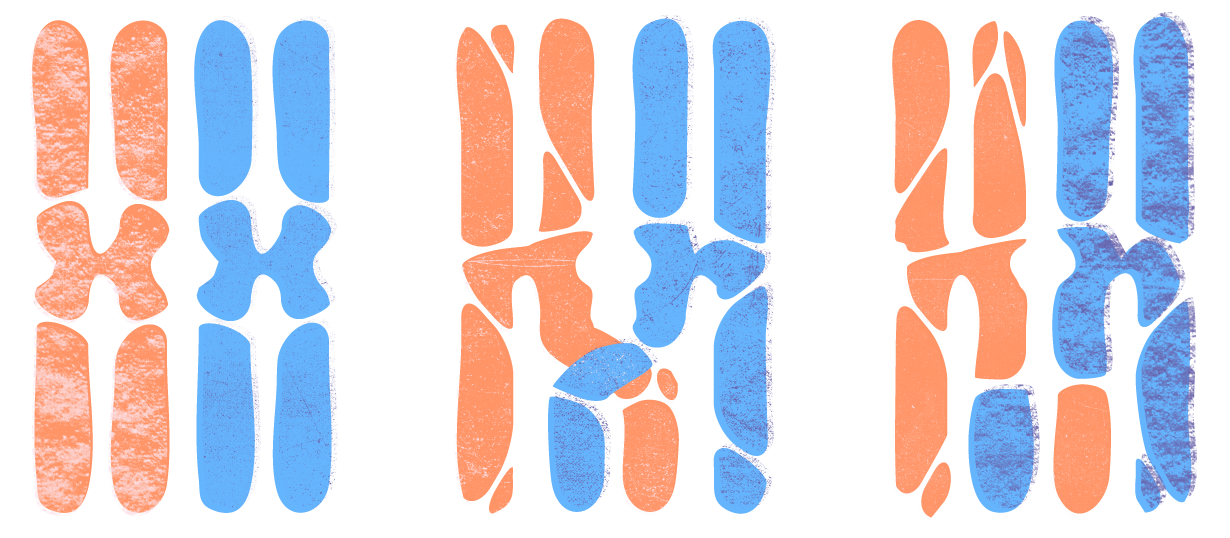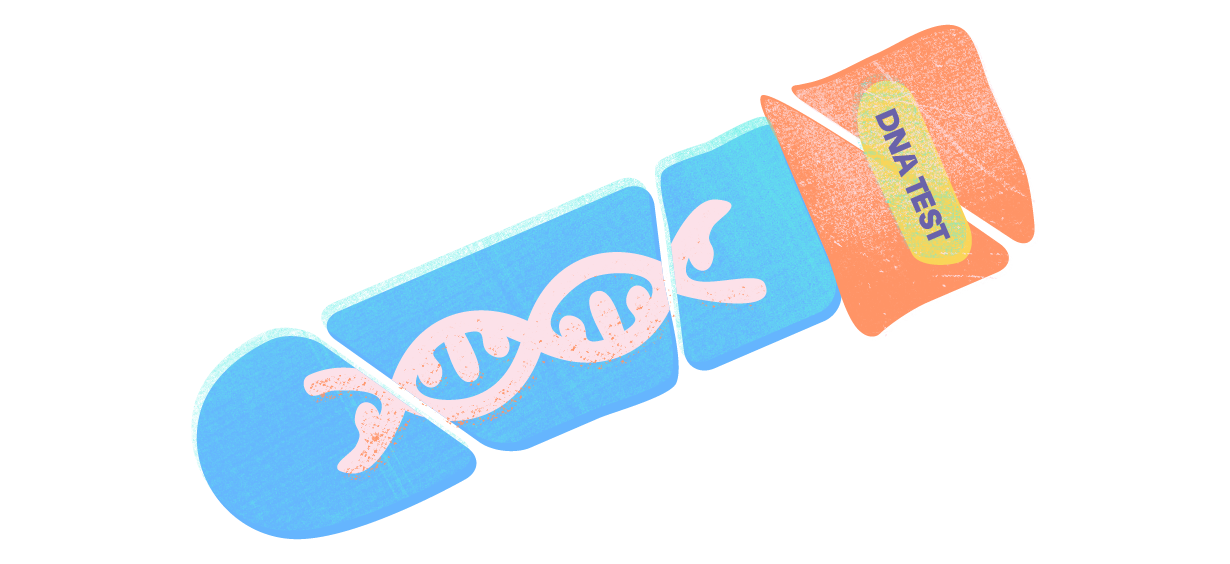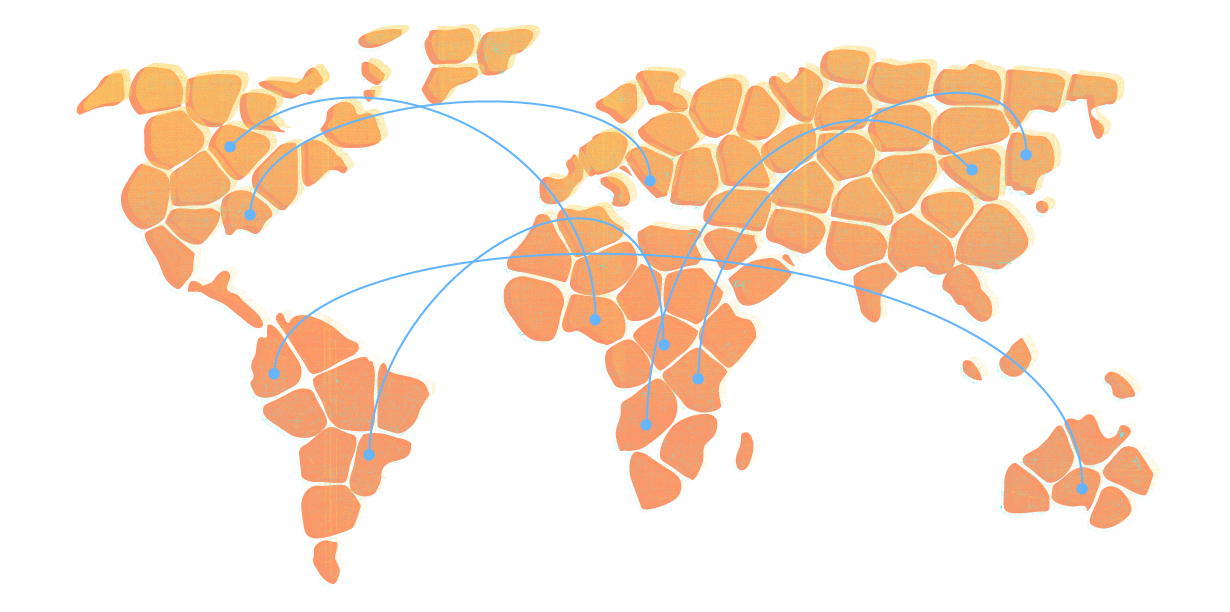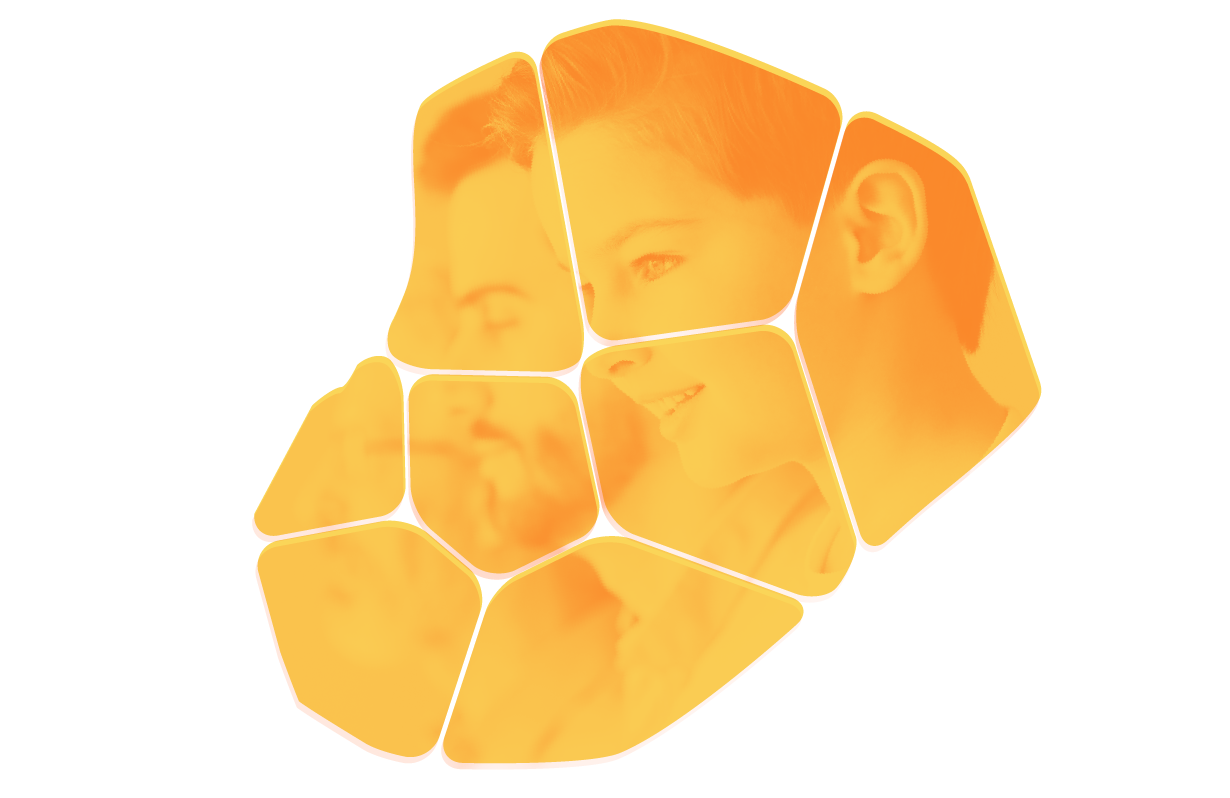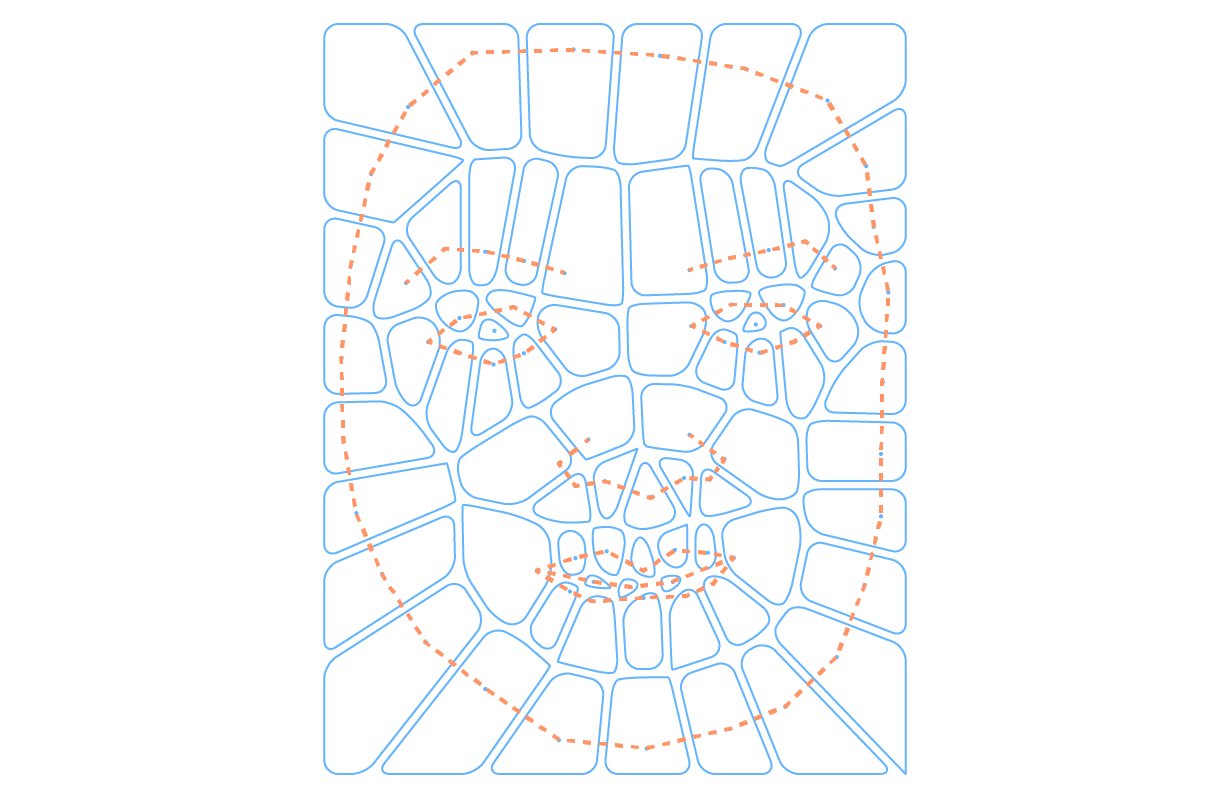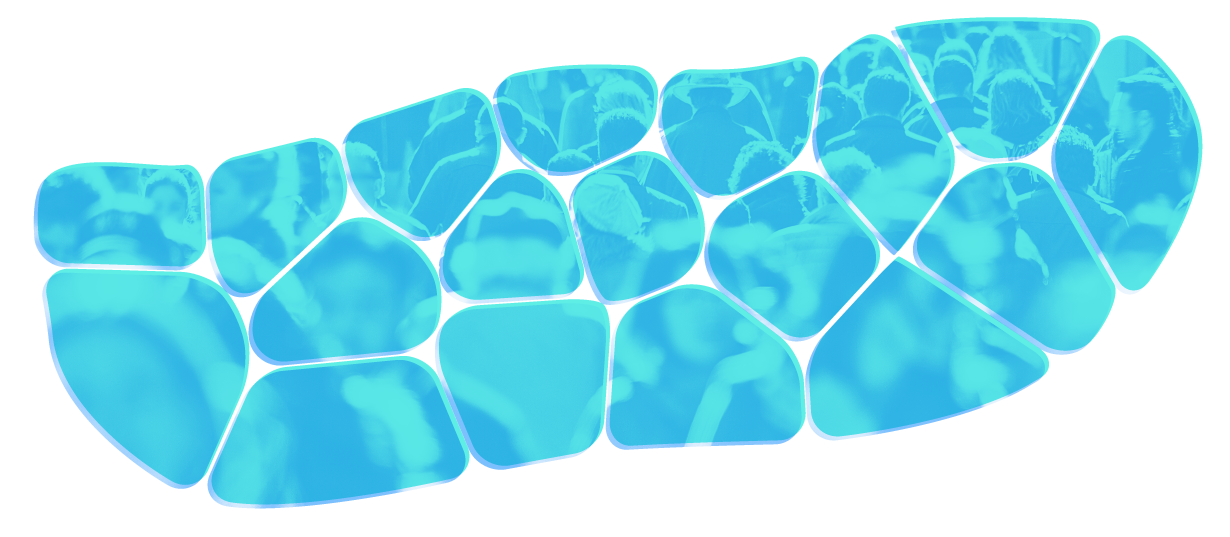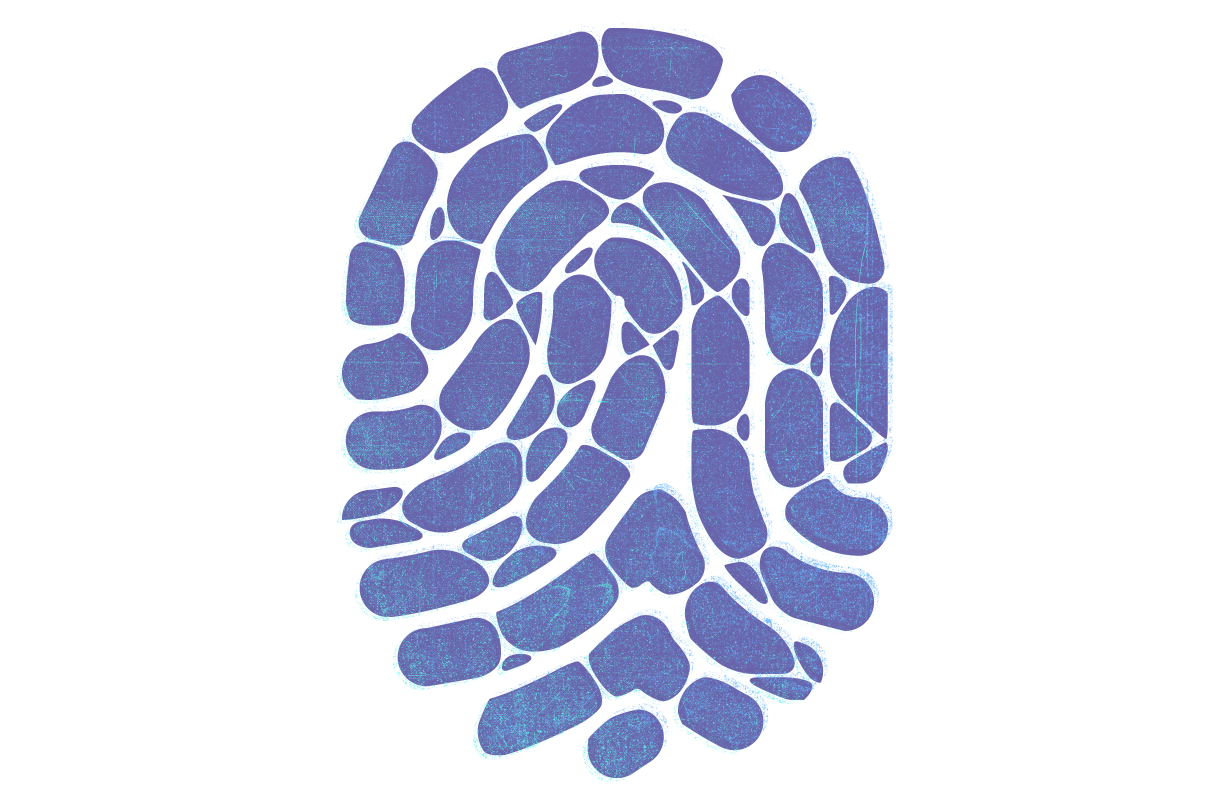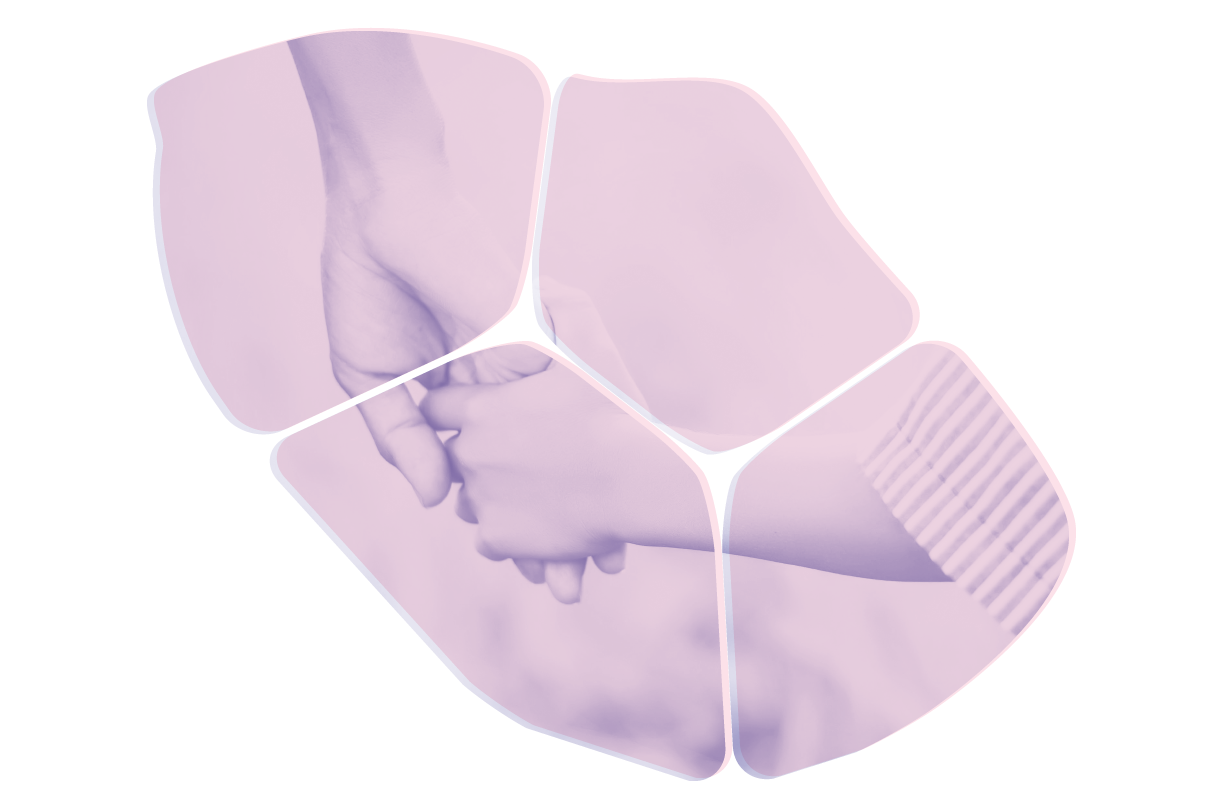Our story is the story of others
Regardless of the place where we were born or the place where we live now, what we believe in or what we know, our genetic material, as humans, is similar in 99.9% of its content. The molecule responsible for this genetic material is DNA (Deoxyribonucleic Acid), which is composed of around 20,000 genes and it is encoded in a total amount of 3,000 million “letters”, called nucleotides. As the DNA structure contains four types of nucleotides -Adenine (A), Timine (T), Guanine (G) and Cytosine (C)- within its double helix, we can say that it is conformed by letters: A, T, G and C.
Genetic material is inside the nucleus of each one of our cells - except for the red blood cells, as they use their inner space to carry oxygen. Imagine a series of books of 130 volumes, that is what an entire human genome in printed form would look like. Now imagine that we carry a copy of these 130 volumes inside each one of our cells. DNA gives each one of our cells the instructions to grow, feed, communicate, reproduce and perform any other human body function. The total amount of DNA in each one of our cells is called the genome, in our case, the human genome. Your genome is unique in its own 0.1% way.
Different institutions and researchers around the world collaborated to sequence, for the first time, the whole human genome. The draft of the human genome sequence was published in 2001 in what is known as The Human Genome Project (HGP). Thanks to this project it was confirmed that two unrelated individuals share 99.9% of the DNA sequence and only 0.1% of the sequence contains variations.
The 0.1% genetic difference between individuals represents millions of variations between individuals. In fact, thanks to the HGP, today we know that most of these variations correspond to variants of a single nucleotide (SNP), that is, in a certain position on the DNA sequence it is possible to find changes in different alleles, for example, A for a G, and the frequency of these alleles can vary between populations. SNPs that are common among populations serve as genetic markers and it is precisely the comparison of their frequency among populations that is used to study different evolutionary processes, both within the human species and between humans and other species.
Variations on the human genome sequence may or may not be visible through our physical features, but have helped humans and other species through several generations to become better adapted to survive and reproduce in the different environments.
With the conclusion of the HGP there has been an important technological development in the genomic field. Today, thanks to genomic platforms, it is possible to sequence portions or the entire genome of an individual at an affordable cost and easy service, such as direct-to-consumer genetic tests available in the market. One of the most popular is the ancestry genetic test that has reached millions of consumers around the world.
The genetic ancestry can be estimated in two ways. One is through as global ancestry, which is the proportion of the individual's genome that is inherited from a given ancestral population, and the other can be done through local ancestry, which infers the ancestral origin of certain chromosomal segments. Both estimations are made by comparing the genetic information of an individual with the corresponding genetic information of other individuals from different geographical origins. The groups of people used to make the comparison are called reference populations. Therefore, every genetic ancestry result will depend very much on the available reference population.
Our genetic material passes through generations mostly without being affected by the environment, therefore it helps us to investigate the migration history of the human species. In fact, according to the African origins theory, modern humans originated from ancestral species in Africa and started to spread around the world approximately 100 to 200 thousand years ago.
Genomic studies help us to study the relationship of hereditary factors with health and diseases. It should be noted that most diseases are complex, such as diabetes, cancer or cardiovascular diseases, which implies that they develop in the interaction between genetic and environmental factors.
Even though there are features that we cannot control because it is in our genome, like the colour of our skin, hair or eyes, or even our physical appearance, there are others whose relationship with our genetic information are more complex, such as our culture, traditions, our beliefs or citizenship. These last examples are what we understand as ethnicity, which is a subjective inheritance product of a human group we belong to. These are all a part of what we today consider to be our identity.
We are the result of people that have been migrating for hundreds of thousand years. We are also the result of humans that created political boundaries, barriers, naming territories as countries. We inherited citizenships. However, in biological terms, these boundaries are inexistent.
In recent years, direct-to-consumer genetic tests that seek to inform the user about their ancestry or their predisposition to certain diseases, among other applications, have proliferated, and with those, ethical, legal, social and personal implications are involved that we as a society have to reflect upon.
One of the personal considerations we have to take into account is that, according to the inheritance mechanisms, it is very likely that the information that is “true” for me is also “true” for my relatives. "The right not to know" refers to the inevitable right of my relatives to choose whether or not they want to know about their own genetic status. We have to be aware that making our genetic information available may violate the privacy of a family member who has not performed a genetic analysis. The bigger the databases, the more likely it is to be exposed to unexpected parental relationships.
We have to reflect on assigning an ethnic identity solely using genetic information since it includes two main problems: it dismisses fundamental factors of our identity, such as the historical and geographical evolution of a group, its self-ascription or community recognition. On the other hand, a genetic ancestry result depends on the reference population so different tests could lead to different results.
The information contained in our genome gives us the opportunity of learning from it, for instance it gives us information about those migratory events before us. Each one of us is the result of many stories that have been or can be told. We have the right of knowing and telling our own story, sharing it with our own family and friends, or even with the world. But we also have the right of keeping it private, as we get to consider that our story is also the story of others.
